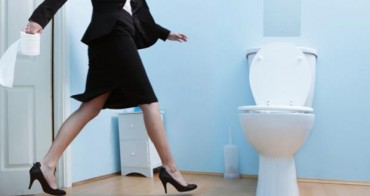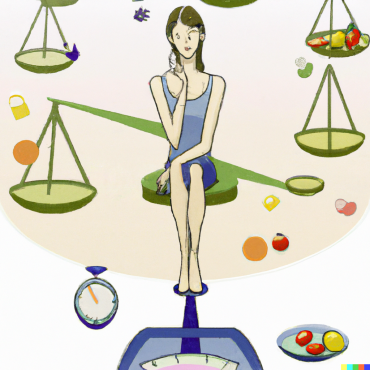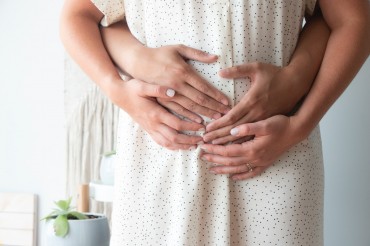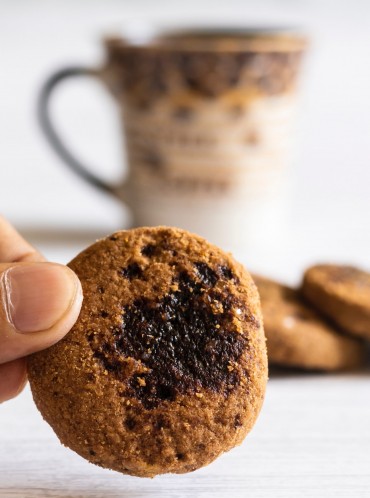Urinary Incontinence is a loss of bladder control. Symptoms can range from mild leaking to uncontrollable wetting which can happen to anyone, even teenagers. Small leaks can occur in woman due to childbirth and athletes. Other reasons can be due to problems such as weak bladder muscles, overactive bladder muscles, blockage from an enlarged prostate, absence of estrogen in the postmenopausal stage, those who are overweight have undue pressure placed on their bladder and surrounding muscles. It is also more common with increasing age as the muscles become weaker, particularly after the menopause.
The pelvic floor muscles are a group of muscles that wrap around the underside of the bladder and rectum. If the muscles that keep the bladder closed are weak, then there may be accidents when you sneeze, laugh or lift a heavy object this is known stress incontinence. It is the most common type of bladder control problem in younger and middle-age women.
Losing weight is particularly effective in reducing episodes of stress incontinence. Losing a modest amount of weight through dietary changes and increased physical activity reduces the occurrence of urinary incontinence and if you smoke, think about quitting as it will make you cough less which may help with incontinence.
Treating Urinary Incontinence
Urinary incontinence can be treated and controlled the simplest and safest way – the Kegels exercise which helps strengthen the pelvic floor muscle. Usually, Kegels is recommended as a post delivery exercise, but to keep the pelvic floor muscle strong it is advisable to include it in your regular exercise regime all along.
Learning to exercise the right muscles
First of all, you will need to find your pelvic floor muscles. Sit on the chair with your knees slightly apart. Imagine you are trying to stop passing wind and urine at the same time. Tighten the muscles around your back passage and your front passage and lift them up inside you. When you do this you are tightening your pelvic floor muscles.
It is easy to use other muscles as well, so here are a few tips so know that you are using only the right ones.
- Do not pull in your stomach
- Do not squeeze your legs together
- Do not tighten your buttocks
- Do not hold your breath
Variations
Slow pull ups – Sit, stand or lie with your knees slightly apart. Slowly tighten your pelvic floor muscles under the bladder as hard as you can. Hold to the count of five and then relax. Repeat at least five times.
Fast pull ups – Same exercise as above but perform it quickly for one or two seconds. Repeat at least five times.
Keep alternating between the five slow pull ups and the five fast pull ups for five minutes for at least three times a day, and build up to 6-10 times a day. Try executing the exercises in different position like when sitting, or standing or even lying down. You can also perform these exercising while answering the phone, when washing up, etc .Muscles soon become strong and now you can increase the length of time you hold each slow pull-up about 10 seconds would be ideal. Improvement will be noticed only around 8-20 weeks. Once you are cured of incontinence, you may perform the exercise for 1or 2 five minute bouts everyday thereafter to keep the pelvic floor muscles strong and toned up.
Resistance training is the key to effective Kegel exercises with positive effects. You can significantly increase the overall quality of your Kegel exercises through progressive resistance training. Your options of Resistance may include the use of barbells, dumbbells, free weights and machines.
Fact
About one out of seven women experience urine leakage sometime during exercise. This is usually due to stress incontinence. Here are a few tips to manage gym disasters.
Tips
If you have an incontinence problem, stay hydrated when exercising by having small sips of water and avoid caffeinated drinks, soda, coffee or tea beforehand as they act as a diuretic. Try to minimize spicy foods like Mexican or Chinese and high-acid foods like cranberry juice, orange juice, and other citrus beverages which irritate your bladder can trigger incontinence problems. Instead opt for veggies and other mild, high-fiber foods. Whether it’s your period or not, a tampon helps prevent leaks from stress incontinence or you can even use incontinence pads. Brace yourself when you laugh or cough by tightening your pelvic muscles. Lastly wear black, Loose-fitting, dark-colored clothes especially when exercising.
Image Courtesy:botoxjuvedermdoctor.com

























































Comments